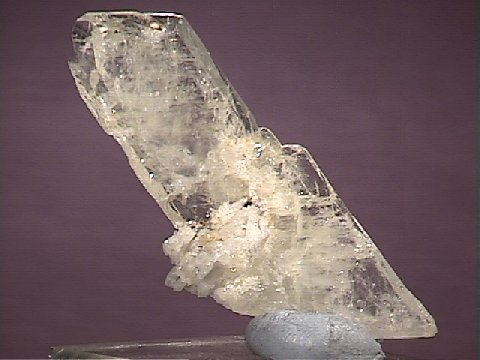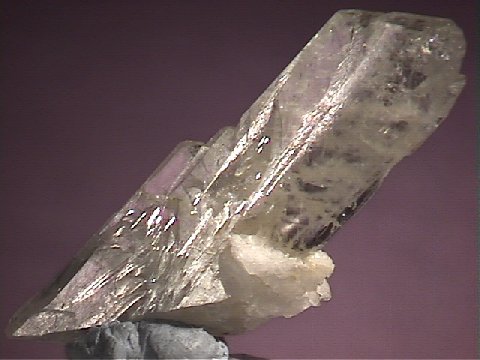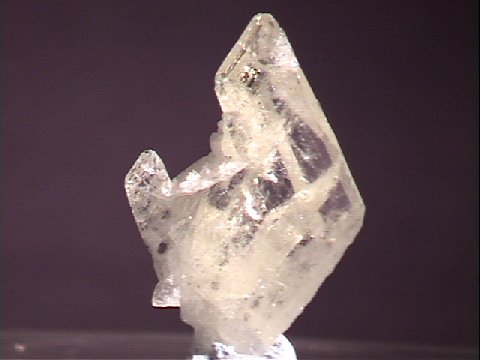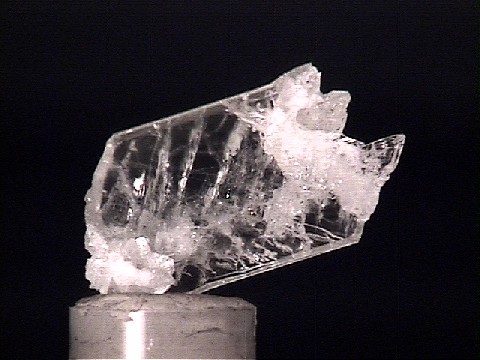THE MINERAL
|
- Chemistry: (Li, Na)AlPO4(OH, F), Lithium Sodium Aluminum Phosphate Hydroxide Fluoride.
- Class: Phosphates
- Group: Amblygonite
- Uses: As a source of lithium and phosphorus and as mineral specimens.
Specimens
Montebrasite is an uncommon phosphate mineral, but is perhaps more common than most mineralogist realize. It is named for its type locality of Montebras, France. It is found in lithium and phosphate rich pegmatites as a primary mineral. Montebrasite has a fairly compact structure. This fact gives rise to a somewhat high specific gravity. Of course a specific gravity of around 3.05 is not considered very high in the mineral kingdom. But a look at montebrasite's formula shows the elements sodium, lithium, aluminum, hydrogen, fluorine, oxygen and phosphorous. None of these elements are heavy and a mineral composed of these elements would be expected to have a specific gravity much lower than 3.
Montebrasite has lithium in its formula and this gives a reliable lithium result with a flame test. Powdered montebrasite which is placed in a gas flame will produce a brightly colored red flame. This is evidence for the presence of lithium.
There is substitution between the hydroxide and fluorine in montebrasite. It forms a solid solution series with the associated and more common mineral amblygonite and differs from amblygonite by being richer in hydroxide instead of fluorine. The structures of the two minerals are the same and there are no discernible differences in physical properties between the two. Although much rarer than amblygonite, many specimens labeled amblygonite are in fact montebrasite.
PHYSICAL CHARACTERISTICS:
- Color is generally white or creamy, but can also be colorless or pale yellow, green, blue, beige, gray or pink.
- Luster is vitreous to greasy and pearly on cleavage surfaces.
- Transparency: Specimens are translucent to less commonly transparent.
- Crystal System is triclinic, bar 1.
- Crystal Habits include short prismatic, tabular or equant crystals referred to as lath-shaped, but more commonly found as anhedral masses and compact grains. Twinning forms elongated, flatten crystals. Lamellar twinning is sometimes seen.
- Cleavage is in four directions all with varying quality with one direction being perfect, two directions being good and one direction being only distinct. All cleavage angles are non-right angles.
- Fracture is uneven to conchoidal.
- Hardness is 5.5 - 6
- Specific Gravity is approximately 2.98 - 3.10 (slightly above average).
- Streak is white.
- Other Characteristics: When powdered and placed in a gas flame, it gives the flame a bright red color and this indicates the presence of lithium. Some specimens are fluorescent orange in long-wave UV light.
- Associated Minerals include lepidolite, quartz, albite, elbaite, apatite, brazilianite, beryllonite, amblygonite, triphylite, lithiophilite and spodumene
- Notable Occurrences are Montebras, France; Maricopa and Yavapai Counties, Arizona, USA and other localities where amblygonite is found.
- Best Field Indicators are density, associations, environment, lithium flame test and especially the numerous cleavage angles.








